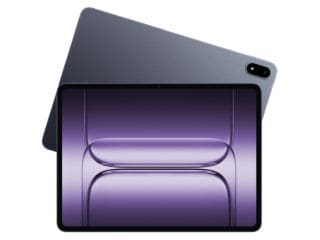- Home
- Science
- Science News
- Chandrayaan 2 Orbiter's CLASS Spectrometer Maps Abundance of Sodium for the First Time, ISRO Says
Chandrayaan-2 Orbiter's CLASS Spectrometer Maps Abundance of Sodium for the First Time, ISRO Says
ISRO's Chandrayaan-2 Large Area Soft X-ray Spectrometer (CLASS) provides clean signatures of the sodium line thanks to its high sensitivity and performance.
Photo Credit: Reuters
The X-ray spectrometer 'CLASS' was built at the U R Rao Satellite Centre of ISRO
The X-ray spectrometer 'CLASS' on the Chandrayaan-2 orbiter has mapped an abundance of sodium on the moon for the first time, according to the Indian Space Research Organisation. Chandrayaan-1 X-ray Fluorescence Spectrometer (C1XS) detected sodium from its characteristic line in X-rays which opened up the possibility of mapping the amount of sodium on the moon, ISRO said.
In a recent work published in 'The Astrophysical Journal Letters', Chandrayaan-2 mapped the abundance of sodium on the Moon for the very first time using CLASS (Chandrayaan-2 Large Area Soft X-ray Spectrometer), the national space agency said in a statement on Friday.
"Built at the U R Rao Satellite Centre of ISRO in Bengaluru, CLASS provides clean signatures of the sodium line thanks to its high sensitivity and performance," the statement said.
The study finds that a part of the signal could be arising from a thin veneer of sodium atoms weakly bound to the lunar grains.
These sodium atoms can be nudged out of the surface by solar wind or ultraviolet radiation more easily than if they were part of the lunar minerals. Also shown is a diurnal variation of the surface sodium that would explain the continuous supply of atoms to the exosphere, sustaining it, the statement said.
An interesting aspect that widens the interest in this alkali element is its presence in the wispy atmosphere of the moon, a region so thin that the atoms there rarely meet.
This region, termed an 'exosphere', begins at the surface of the moon and extends several thousand kilometres merging into the interplanetary space, the statement noted.
"The new findings from Chandrayaan-2 provide an avenue to study surface-exosphere interaction on the moon which would aid development of similar models for mercury and other airless bodies in our solar system and beyond," the ISRO said.
For the latest tech news and reviews, follow Gadgets 360 on X, Facebook, WhatsApp, Threads and Google News. For the latest videos on gadgets and tech, subscribe to our YouTube channel. If you want to know everything about top influencers, follow our in-house Who'sThat360 on Instagram and YouTube.
Related Stories
- Samsung Galaxy Unpacked 2025
- ChatGPT
- Redmi Note 14 Pro+
- iPhone 16
- Apple Vision Pro
- Oneplus 12
- OnePlus Nord CE 3 Lite 5G
- iPhone 13
- Xiaomi 14 Pro
- Oppo Find N3
- Tecno Spark Go (2023)
- Realme V30
- Best Phones Under 25000
- Samsung Galaxy S24 Series
- Cryptocurrency
- iQoo 12
- Samsung Galaxy S24 Ultra
- Giottus
- Samsung Galaxy Z Flip 5
- Apple 'Scary Fast'
- Housefull 5
- GoPro Hero 12 Black Review
- Invincible Season 2
- JioGlass
- HD Ready TV
- Laptop Under 50000
- Smartwatch Under 10000
- Latest Mobile Phones
- Compare Phones
- Vivo Y300 GT
- Samsung Galaxy F56 5G
- Realme C75 5G
- Lava Yuva Star 2
- Vivo Y19 5G
- iQOO Z10 Turbo Pro
- iQOO Z10 Turbo
- CMF by Nothing Phone 2 Pro
- Alienware 16X Aurora
- Alienware 16 Aurora
- Amazon Kindle Paperwhite (12th Gen)
- Lenovo Legion Y700 4th Gen
- boAt Storm Infinity Plus
- Moto Watch Fit
- Xiaomi QLED TV FX Pro (55-inch)
- Xiaomi QLED TV FX Pro
- Asus ROG Ally
- Nintendo Switch Lite
- Toshiba 1.8 Ton 5 Star Inverter Split AC (RAS-24TKCV5G-INZ / RAS-24TACV5G-INZ)
- Toshiba 1.5 Ton 5 Star Inverter Split AC (RAS-18PKCV2G-IN / RAS-18PACV2G-IN)

















